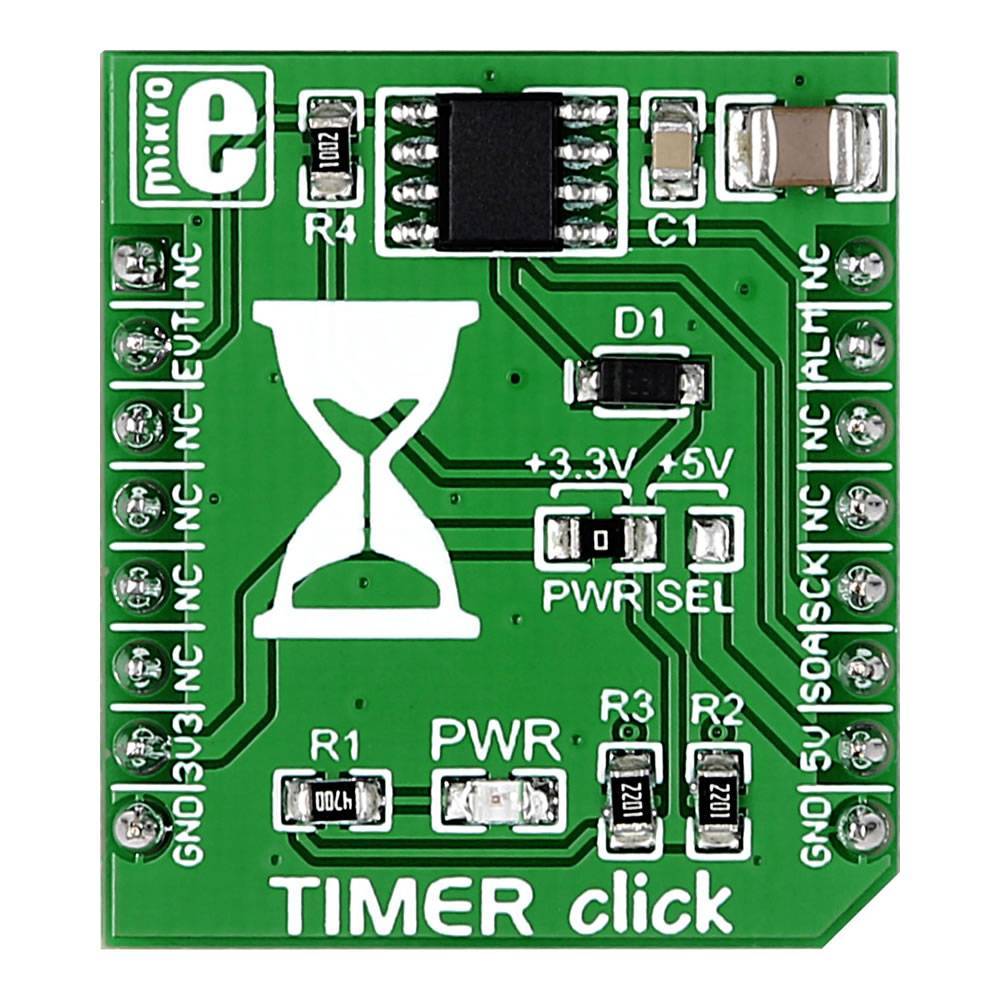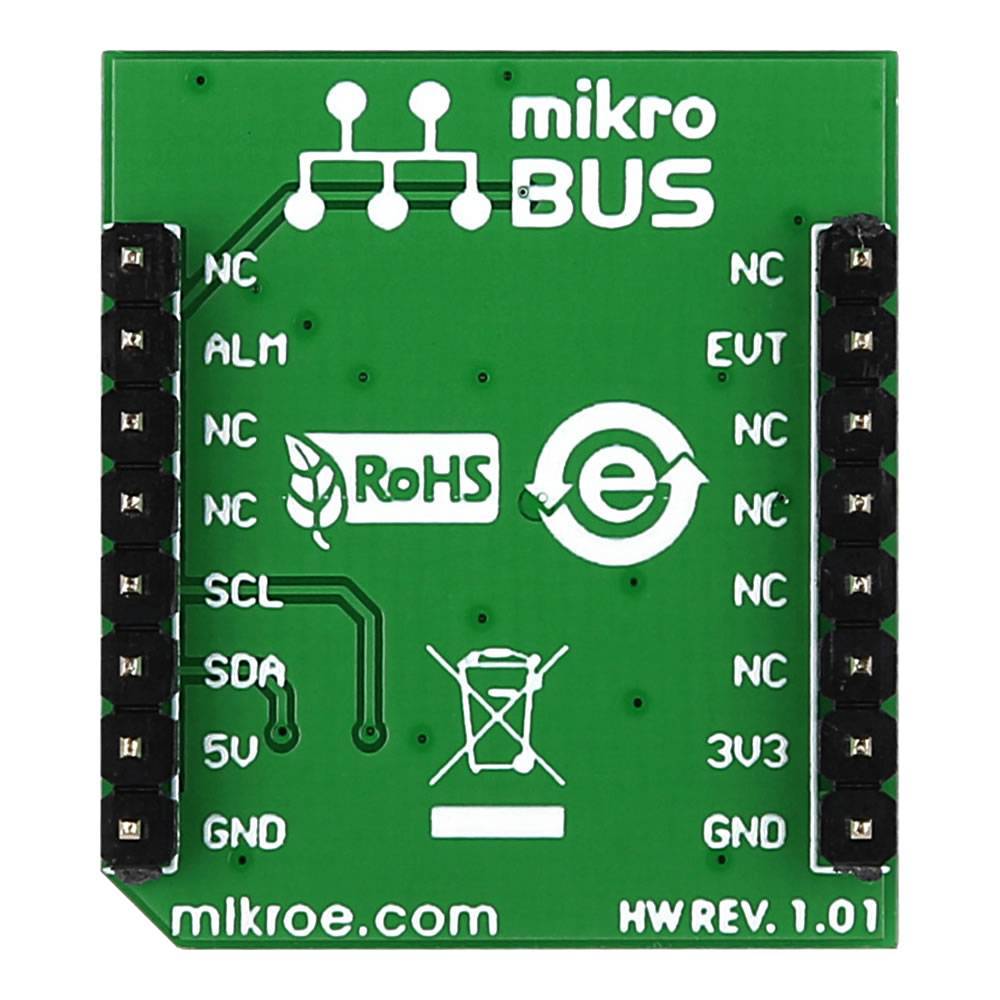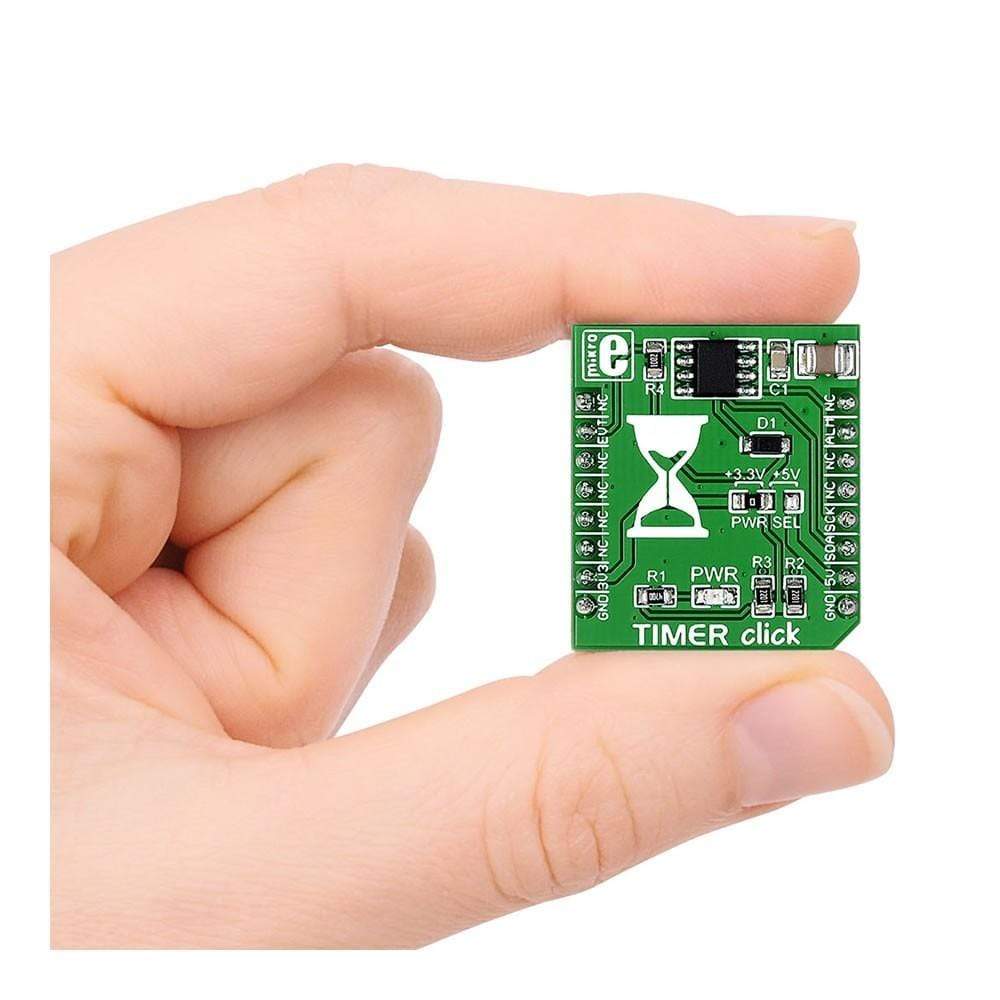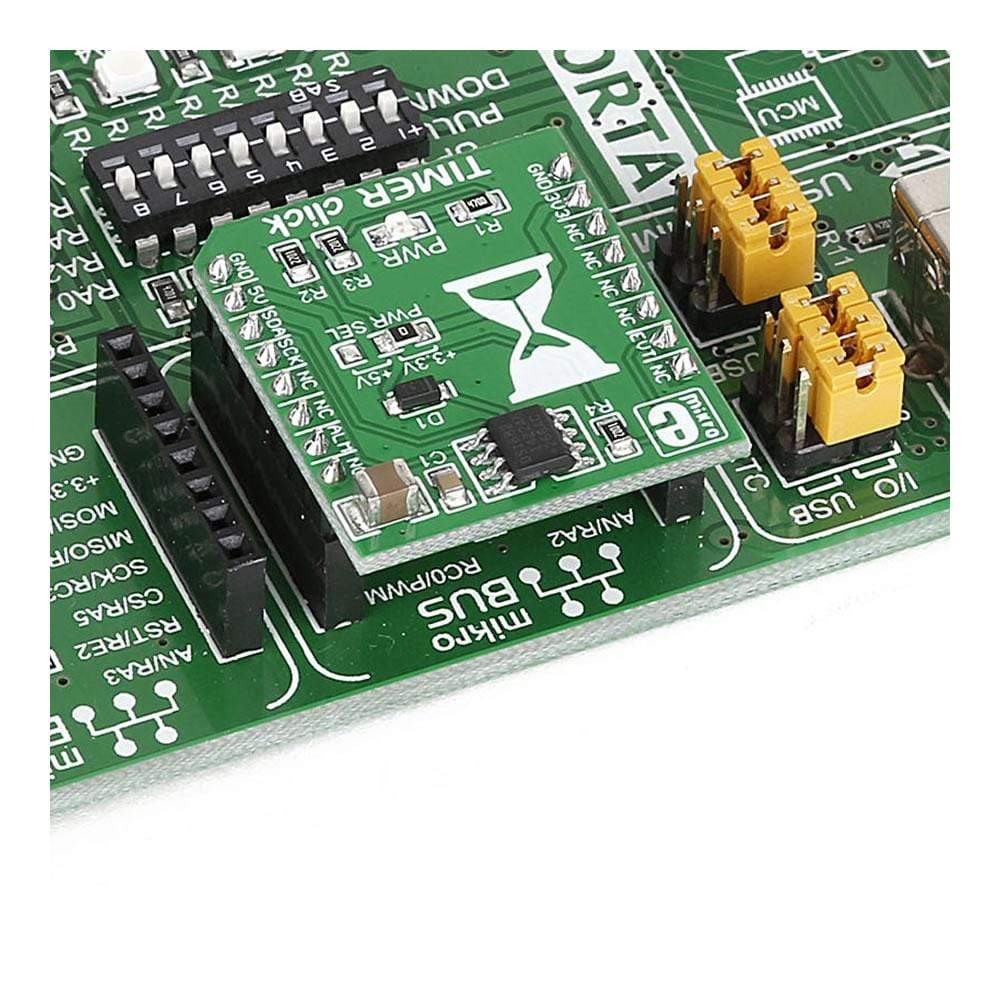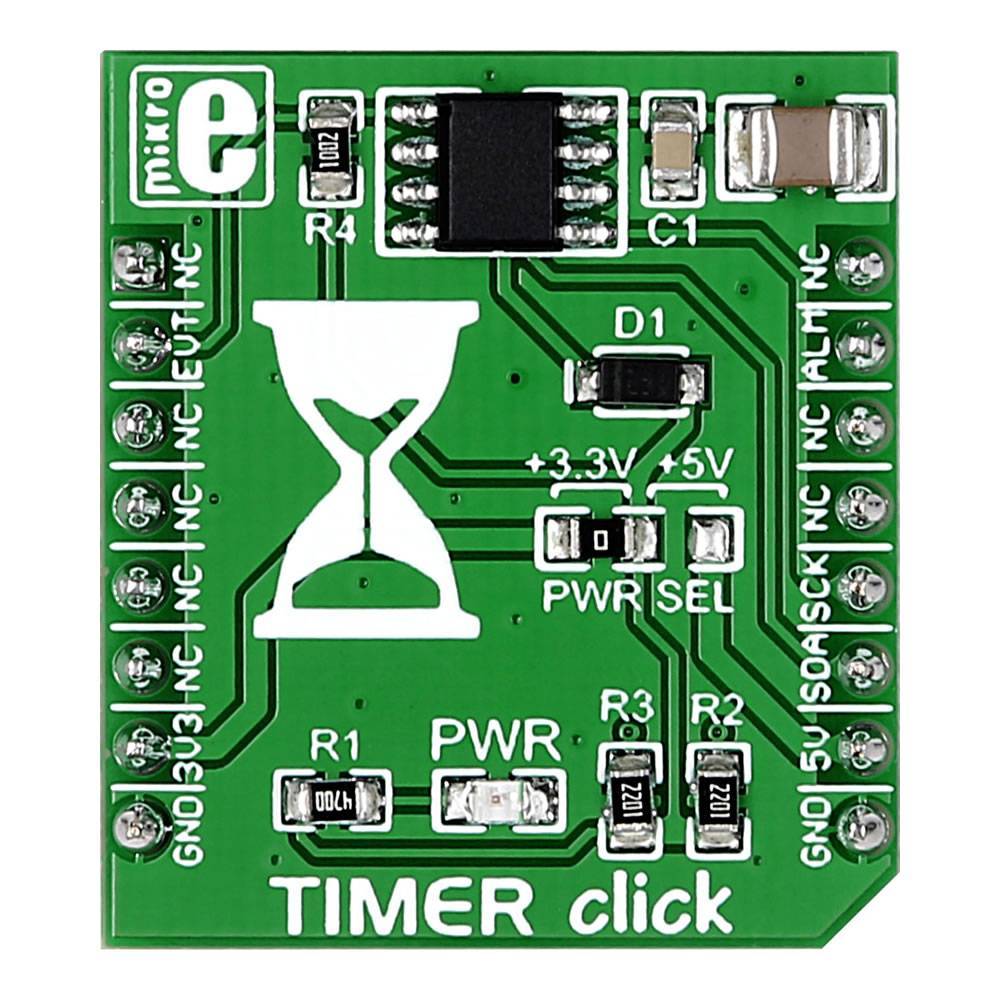
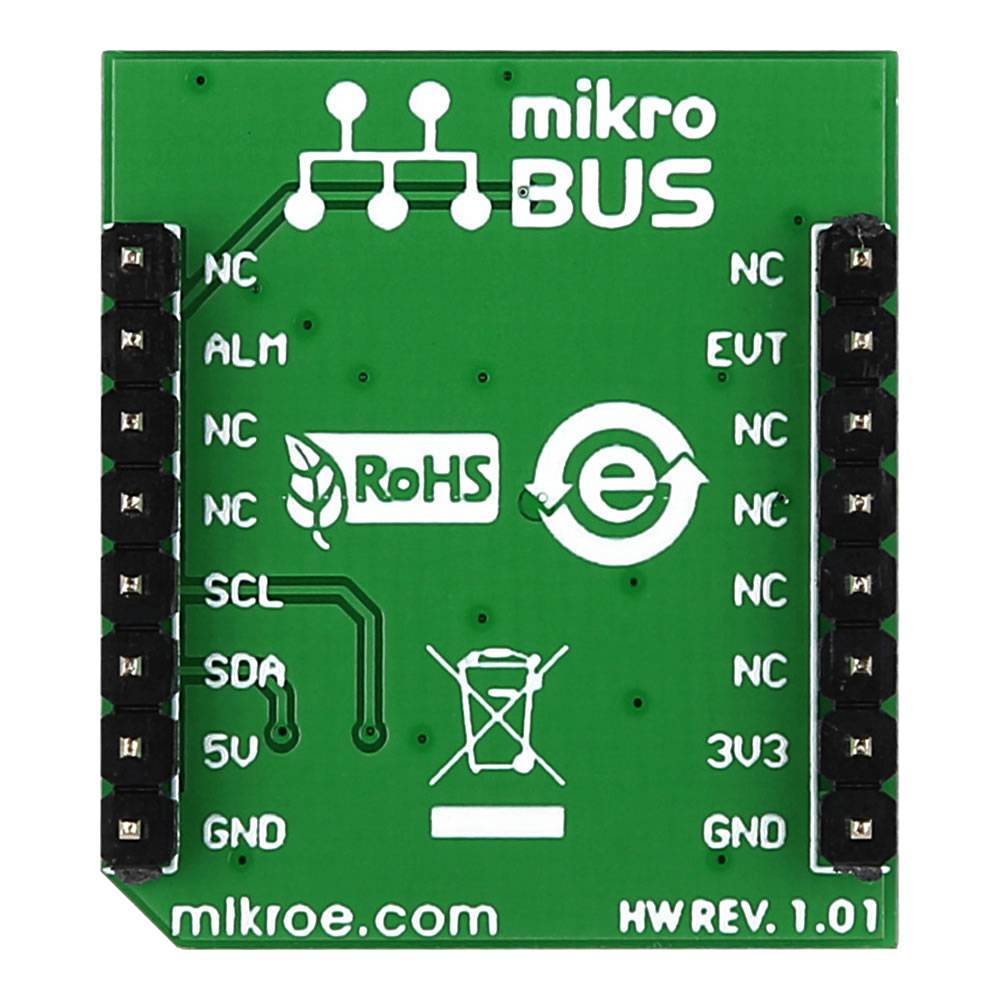
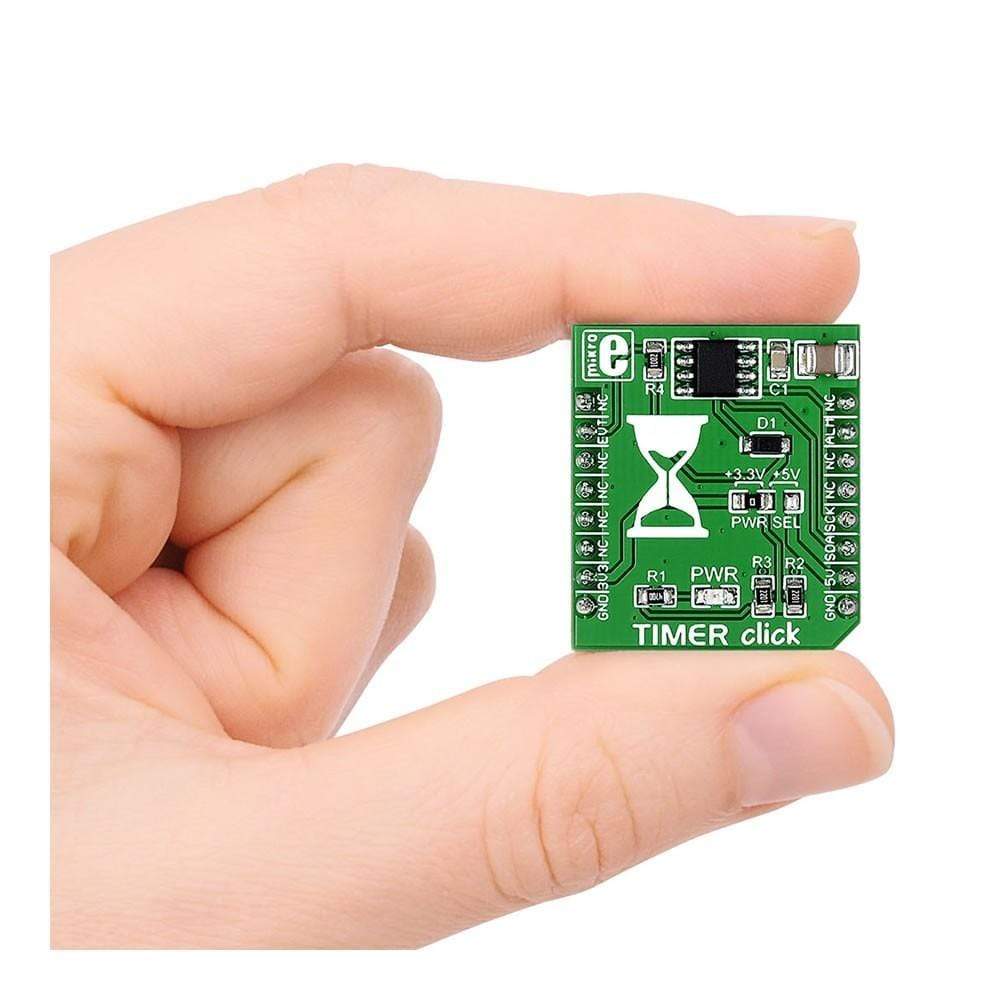
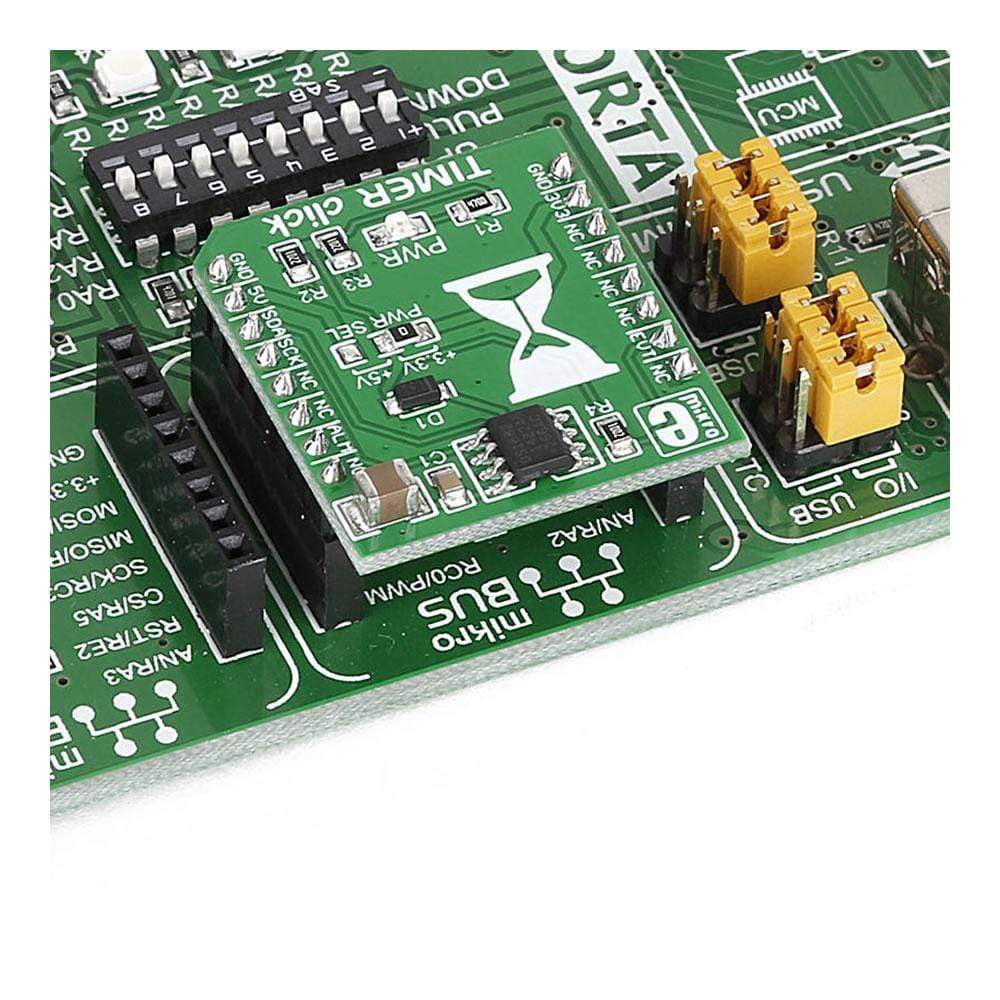
Overview
The Timer Click Board™ is a mikroBUS add-on board with Maxim's DS1682 total elapsed time recorder. The main feature of the IC is its elapsed time counter (ETC) used in conjunction with the ALARM pin.
Downloads
Der Timer Click Board™ ist eine MikroBUS-Zusatzkarte mit dem DS1682-Gesamtzeitrekorder von Maxim. Das Hauptmerkmal des IC ist sein Zeitzähler (ETC), der in Verbindung mit dem ALARM-Pin verwendet wird.
| General Information | |
|---|---|
Part Number (SKU) |
MIKROE-2333
|
Manufacturer |
|
| Physical and Mechanical | |
Weight |
0.025 kg
|
| Other | |
Country of Origin |
|
HS Code Customs Tariff code
|
|
EAN |
8606015078274
|
Warranty |
|
Frequently Asked Questions
Have a Question?
Be the first to ask a question about this.

